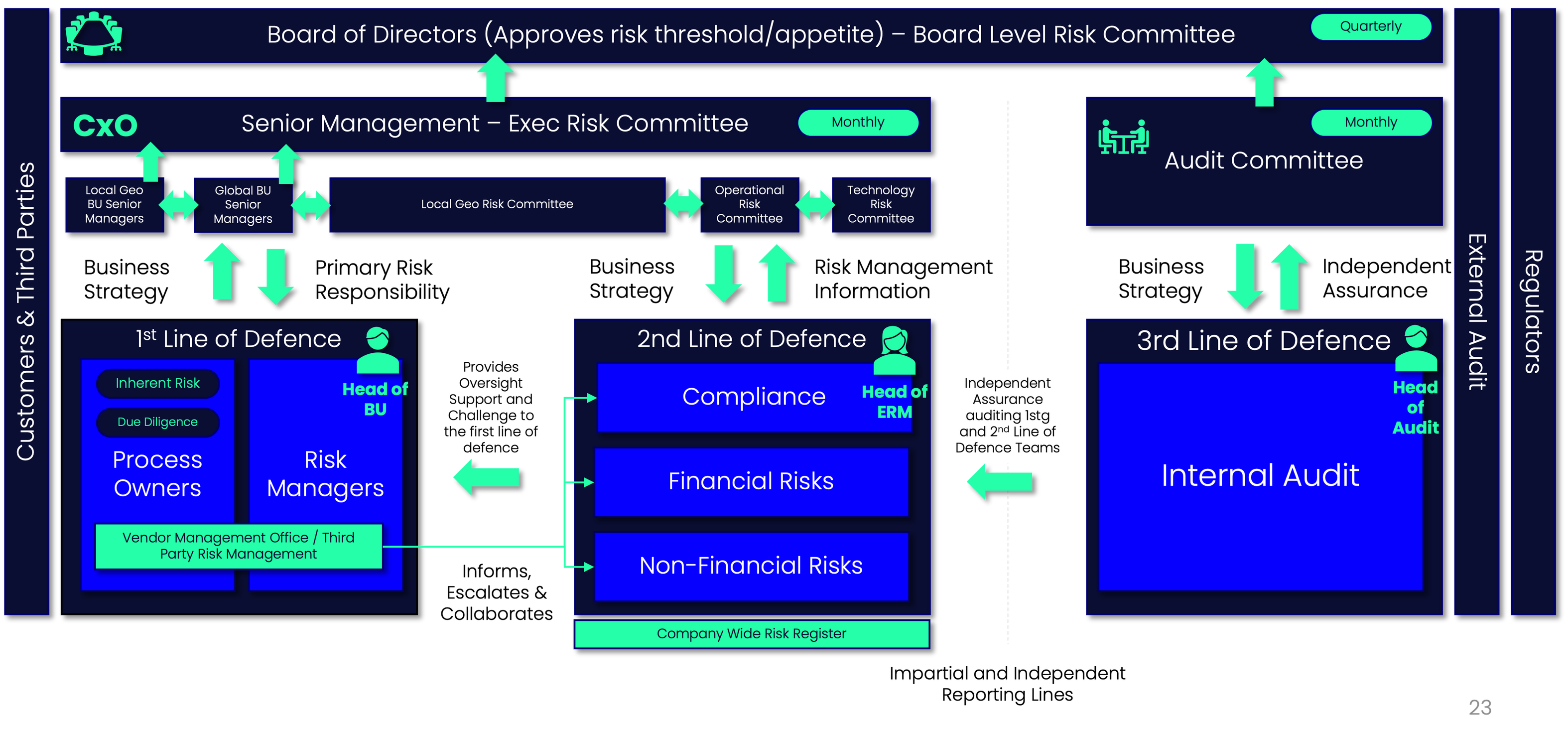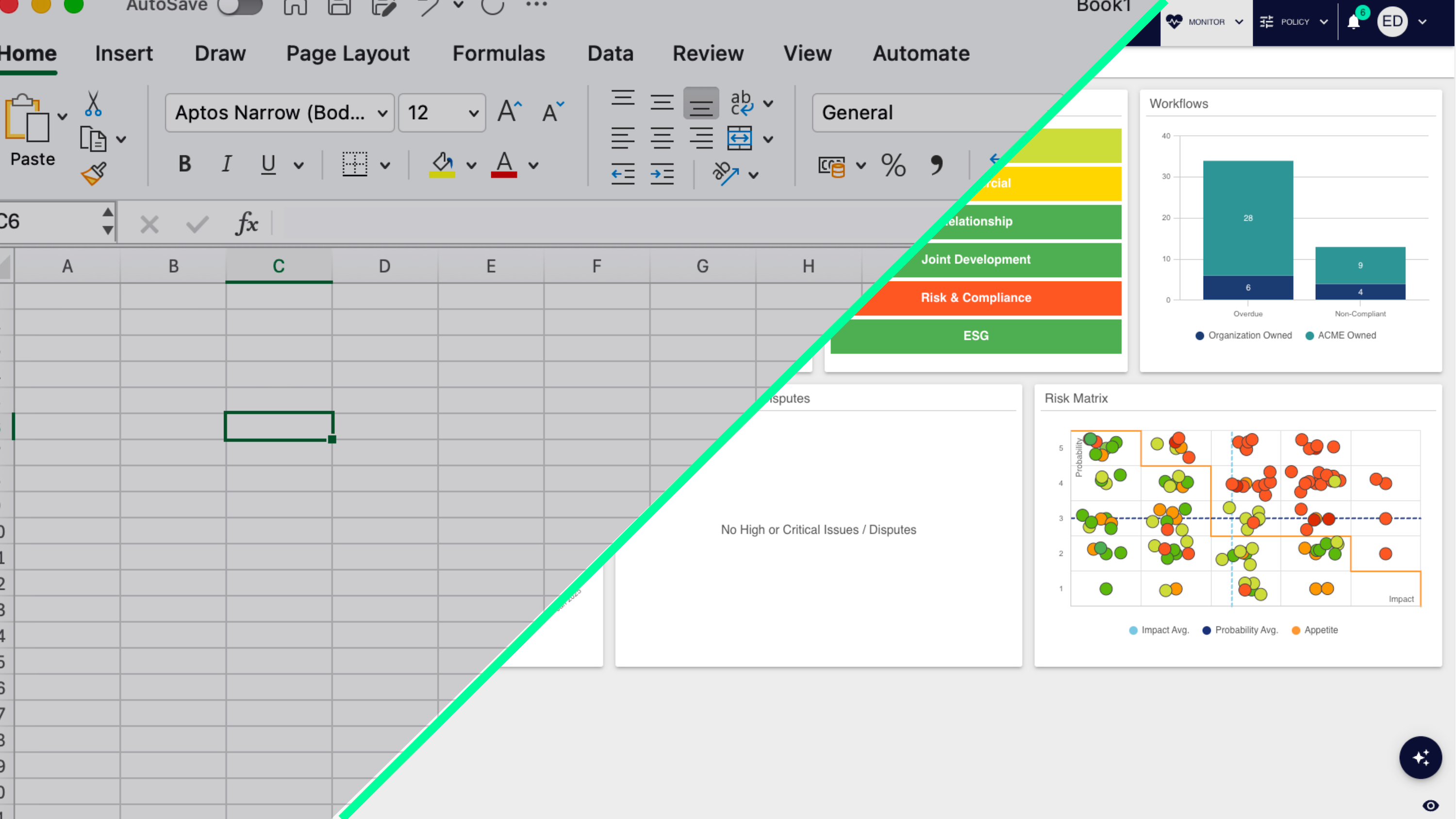As companies increasingly depend on third such as suppliers, vendors and contractors, third-party risk management (TPRM) is high on the list of business priorities. Third-Party Risk Management (TPRM) addresses risks associated with working with third parties, ensuring businesses identify, assess and mitigate any vulnerabilities, pre- and post-contract.
The core aim of TPRM is to create a structured approach to managing third-party relationships, ensuring thorough evaluation and mitigation of risks. Involving due diligence during onboarding, continuous monitoring of third-party performance, and regular reassessment of risks as business conditions evolve. By implementing robust TPRM practices, organisations can protect themselves from reputational damage, financial loss, and regulatory penalties, creating a secure and resilient operational ecosystem.
Successful TPRM requires businesses to implement an effective governance model for mitigating risks and ensuring regulatory compliance. Within this blog, we dive into the Three lines of defence model, a sophisticated framework with TPRM governance.
The Three Lines of Defence Model:
The Three Lines of Defence Model is a valuable framework that outlines the roles and responsibilities within a company in assuring effective risk management of third parties. This plays a crucial part in TPRM.
Applying the three lines of defence model in an organisation is not a silver bullet for achieving effective internal audit. Much also depends for example on the standing, scope and resourcing of the internal audit function. However if the positioning and governance structure for internal audit are wrong, its ability to support the board or audit committee in their challenging of management can be fatally undermined.

First Line of Defence:
The first line of defence encompasses the operational aspects of the business. This is where day-to-day activities occur, and process owners manage vendors, ensuring due diligence and risk mitigation strategies are in place from the outset of engagements.
Second Line of Defence:
Sitting atop the first line is the second line of defence, typically comprising the company’s risk management teams. These teams provide oversight, support, and challenge to the first line, ensuring that risks are adequately identified, assessed, and managed.
Third Line of Defence:
The third line of defence is represented by internal audit functions. Independent and impartial, internal audit assures the effectiveness of both the first and second lines of defence, verifying that strategic objectives align with operational practices and regulatory requirements.
Interplay and Collaboration:
The governance structures within TPRM facilitate collaboration and communication across various levels of the organisation. From local geographic risk committees to senior management executives and board directors, each entity plays a vital role in ensuring holistic risk management practices.
Conclusion
Effective governance is the cornerstone of successful third-party risk management. By adopting the three lines of defence model and fostering collaboration among key stakeholders, Organisations can navigate the complexities of TPRM with confidence, safeguarding their operations and reputation.
Download our TPRM Whitepaper
For an in-depth exploration of Third-Party Risk Management, download our comprehensive whitepaper. It covers the necessity, key components, and actionable steps for implementing robust TPRM frameworks. Learn how to align strategies with corporate objectives, establish effective governance, and mitigate risks to ensure long-term success.



